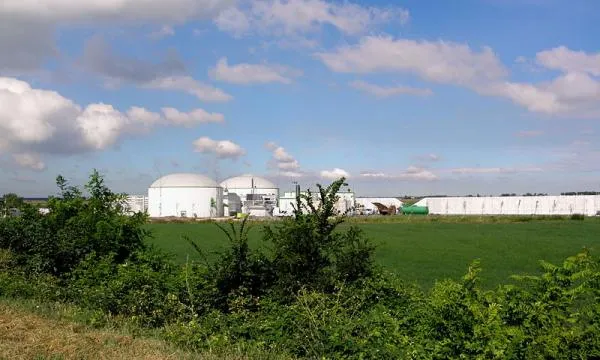
These 5 Asian countries could boost 55% of the world's biomass additions
China is expected to lead the pack and add 12GW in the next decade.
Is Asia up to the challenge of dominating the biomass sector? BMI Research has put five countries on its cards for the top global biomass capacity additions markets, namely China, India, Japan, Thailand, and Malaysia, it said in a report.
Together, these markets are projected to represent 55% of global capacity additions between 2017 and 2027 and grow Asia's share of total installed biomass capacity globally from 33% to 39% over this timeframe.
Also read: Biomass feeds Malaysia's appetite for renewables
China is expected to make up close to 30% of total biomass capacity additions over the coming decade, adding 12GW in total. India will be the second fastest expanding market with its 6GW of capacity additions.
“These two countries have substantial access to biomass residue, with agribusiness, forestry and waste generating feedstock that can be be incinerated for power generation,” BMI Research said.
China is even projected to overtake Brazil and become the largest biomass market globally by 2019. “The country leverages residue from a broad base of activities,” the firm said.
These include residues left from the food harvest, with straw and stalks from maize, rice, cotton and wheat being of particular potential in central and north-eastern parts of the country. “Whereas, forestry derived biomass feedstock will have greater potential in southern and central parts of China where such industry is more prominent,” it added.
China has also adopted ambitious growth targets for the sector, aiming to have 15GW of capacity installed by 2020, rising to 30GW by 2030. “We expect China to outperform these targets, and reach its near-term target by 2019, with total capacity in 2020 amounting to 17GW,” BMI Research said.
This ties into the government's 13th five-year plan, where the biomass is envisioned to generate heat and electricity that is equivalent to 58 million tonnes of coal by 2020. The National Energy Bureau of China (NEA) also outlined multiple initiatives such as directly replacing coal with agricultural waste in combined heat & electricity generation were outlined.
“This ties into our view that by 2027, the size of the sector will have increased to 25.5GW,” BMI Research said.
The firm also has an upbeat view for Japan due to the “substantial backlog” of biomass projects with access to attractive feed-in-tariffs. “This backlog, which totalled 12.4GW as of March 2017, is the result of the attractive incentives offered to developers to support the government's aim to reduce Japan's heavy reliance on imported coal and natural gas,” it said.
Whilst BMI Research is upbeat on growth and forecasts 1.5GW of biomass capacity to come online between 2017 and 2020, capacity additions are still expected to underperform Japan's sizeable approval backlog and to slow substantially over the longer term, however.
Also read: Japan's RE targets too ambitious, analysts say
“This is due to provisions made by the government to curb the amount of projects progressing, with all FiT applicants being required to have grid connections as of April 2017, ensuring that a large portion of the project backlog will fail to progress,” the firm said. “The FiT for larger projects has also been reduced.”
“Both moves will mitigate a further build-up in the FiT backlog and feeds into our view that growth in the sector will slow post-2020,” it added.
According to the report, the world’s total installed biomass capacity could expand by more than a third over the coming decade, reaching nearly 160GW by 2027. “This means that biomass capacity growth will average 3.2% between 2017 and 2027, a rate that is relatively slower than the equivalent 7% and 11.7% growth rates we forecast for the wind and solar sectors respectively,” it said.
Biomass power's share of total installed non-hydropower renewables is forecast to decline from the 11.3% registered over 2017 to 7.5% by 2027.
Photo from Threecharlie - Own work, CC BY-SA 3.0








![Cross Domain [Manu + SBR + ABF + ABR + FMCG + HBR + ]](https://cmg-qa.s3.ap-southeast-1.amazonaws.com/s3fs-public/styles/exclusive_featured_article/public/2025-01/earth-3537401_1920_4.jpg.webp?itok=WaRpTJwE)
![Cross Domain [SBR + ABR]](https://cmg-qa.s3.ap-southeast-1.amazonaws.com/s3fs-public/styles/exclusive_featured_article/public/2025-01/pexels-jahoo-867092-2_1.jpg.webp?itok=o7MUL1oO)









 Advertise
Advertise


